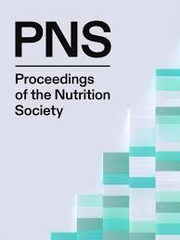No CrossRef data available.
Article contents
Vitamin D and breast cancer risk: a systematic review and meta-analysis of observational studies and randomised controlled trials
Published online by Cambridge University Press: 09 October 2025
Abstract
Breast cancer (BCa) is the most diagnosed cancer in the world, with an estimation of 2.3 million new cases in 2020(1). Although the results of observational studies (OSs) have shown that vitamin D status is inversely associated with the risk of BCa(2), this observation is not supported by randomised controlled trials (RCTs)(3). Given these inconsistent findings between OSs and RCTs, this study aims to investigate the association between vitamin D status and BCa risk using data from both OSs and RCTs.
The systematic search was conducted in PubMed, Embase, and Web of Science for articles published up to June 2024. After title/abstract and full-text screening, 45 OSs and eight RCTs were eligible for inclusion in the systematic review. Of the 45 OSs, 26 that measured vitamin D status (i.e., serum 25-hydroxyvitamin D [25(OH)D] concentration) were eligible for inclusion in the meta-analysis. Meta-analysis of 26 OSs and eight RCTs were conducted in STATA 18 using random effect model.
The meta-analysis of OSs showed that sufficient serum 25(OH)D concentrations (65.98 ± 19.60 nmol/L) were inversely associated with BCa risk when compared to insufficient serum 25(OH)D concentrations (47.48 ± 19.03 nmol/L) (Log Odds Ratio (LOR) = -0.16, 95% CI: -0.27 – -0.05, p < 0.001, I2 = 92.42%). In contrast, the RCTs showed a non-significant reduction in BCa risk with vitamin D supplementation (24.45 ± 21.85 µg/day) (Log Hazard Ratio = -0.02, 95% CI: -0.04 – 0.01, p = 0.16, I2 = 25.88%). Subgroup analysis was conducted in OSs based on participants’ vitamin D status at baseline (deficient and insufficient: ≤ 50 nmol/L; sufficient: > 50 nmol/L). Results showed that vitamin D sufficiency at baseline was not associated with BCa risk (LOR = -0.02, 95% CI: -0.12 – 0.08, p = 0.74, I2 = 76.24%), while vitamin D deficiency and insufficiency at baseline were negatively associated with BCa risk (LOR = -0.30, 95% CI: -0.47 – -0.13, p < 0.05, I2 = 94.84%). This indicates an increase in serum 25(OH)D concentration may reduce BCa risk in vitamin D deficient and insufficient groups, but not in those who are already vitamin D sufficient. The results of subgroup analysis of RCTs based on the type of supplementation (vitamin D; vitamin D + calcium; vitamin D + omega 3) remained insignificant.
To conclude, the findings between OSs and RCTs remained inconsistent. Further research to improve RCT design regarding vitamin D supplementation may be needed, given the current designs focus on vitamin D dose rather than the serum 25(OH)D concentration during interventions.
Information
- Type
- Abstract
- Information
- Proceedings of the Nutrition Society , Volume 84 , Issue OCE4: Nutrition Society Conference 2025, 1-2 July 2025 , August 2025 , E266
- Copyright
- © The Author(s), 2025. Published by Cambridge University Press on behalf of The Nutrition Society


